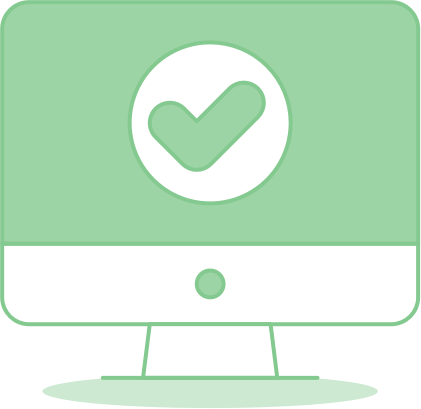Part 1. Register your design
Unlike other IP rights, a registered design is not an enforceable right. To gain the legal rights to take action against someone who uses your design, you must register and certify it.
A registered design gives you:
- The exclusive right to use your design and authorise others to use it in Australia
- A right that can grow in value and can be sold or licensed within Australia
- The ability to apply for the same design overseas (within six months of your Australian application)
- The ability to certify your design – which means you can take legal action against anyone who uses it without permission.
1. Lodge your application
You'll need to:
- Gather your documentation and lodge your application through online services
- Pay the application fee
- Request registration or registration and certification — this can be done when you file your application.
You'll need the following:
- Ownership and contact details (including postal address)
- At least one representation of your design (e.g. a photo or line drawing of your design)
- Product name
- Payment details.
What happens if I don't request registration?
You can choose to request registration at filing, or any time within six months of the filing date. If you don't request registration within six months, we'll start the registration process for you, unless you formally withdraw your application.
2. Your application is published on the Australian design database
We'll publish some details about your application — like the name of the owner and designer. We won't publish what it looks like at this stage.
3. Your application is assessed (eight weeks)
We'll check your application meets the legislative requirements — this is known as a 'formalities assessment'. This usually takes eight weeks.
4. Respond to the outcome
If the formalities assessment finds issues with your application, we'll let you know and you'll have two months to resolve them. If you don't overcome issues within this time, your application will lapse.
5. Your design is registered and published
If there are no issues (or you have overcome them), we'll register your design. This means:
- You'll be issued with a Certificate of Registration to verify that your design's been registered
- This registration lasts for five years
- Your design is published on the Australian Design Search database, which includes images provided in your application.
Part 2. Certify your design (optional)
You can request an examination to certify your design when you file, or at any time during the registration period. A certified design gives you the legal right to take action against others who use it without permission.
A certified design gives you:
- A continuation of all the rights granted at registration
- The legal right to enforce your design and take action against others who use it without your permission.
1. Request examination
Once you've registered your design, you (or another person) can request examination. This can be done when you file or at any time after you file your design application. This process comes with a fee.
2. Your design is examined (13 weeks)
We examine your design to see if it meets the legal test for certification. This involves searching the world for identical and similar designs. If we find your design or a design too similar to yours, it can prevent your design from being certified.
We aim to do this within 13 weeks from the date that you requested examination or the date of registration — whichever is later. We'll let you know in writing if your design doesn’t meet the requirements.
3. Respond to issues raised
If there are any issues raised, we'll let you know and you'll have six months to resolve them. If you can’t overcome them, the registration granted in part one will cease.
4. Your design is certified
If there are no issues (or you have overcome them), we'll certify your registered design. You'll be issued with a Certificate of Examination to verify this.

